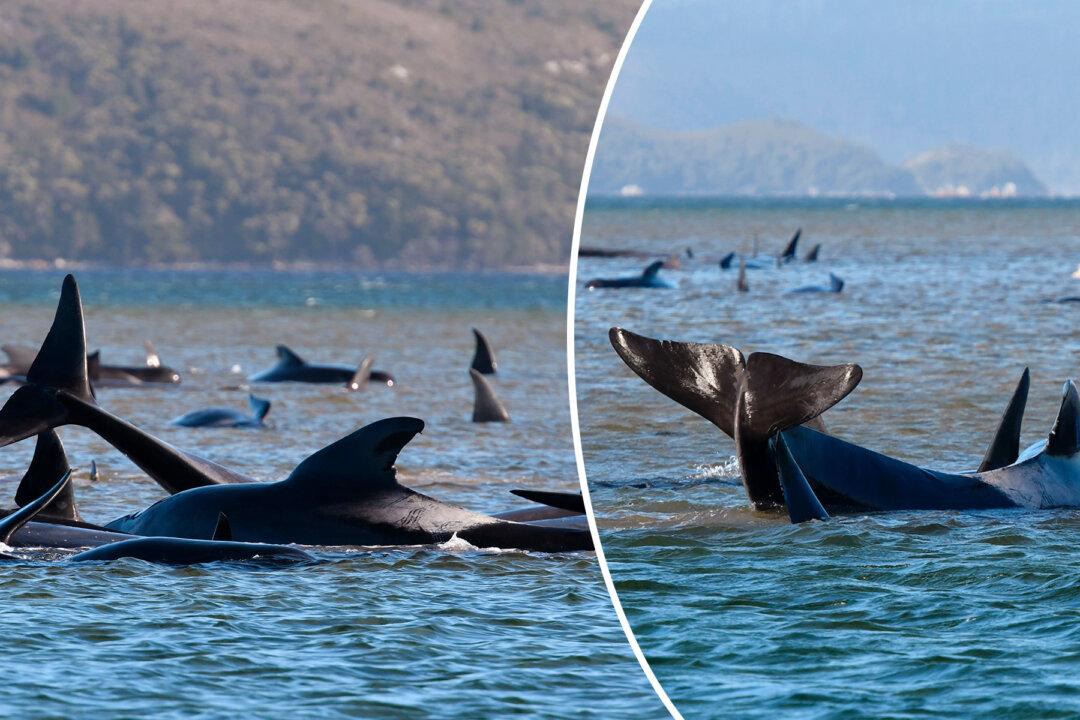While a lucky humpback whale found its way back to sea almost two weeks after losing its way in a crocodile-infested river in northern Australia, efforts are being made to rescue as many as possible out of the estimated pod of nearly 500 pilot whales stranded in Australia’s southern island of Tasmania this past week.
As of now, marine rescue teams are able to save about 88 long-finned whales, while some 380 had died in the mass stranding, Tasmania’s Parks and Wildlife Service said in a statement on Sept. 24.






